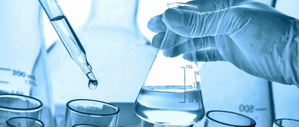India’s bioeconomy leaps from just $10 bn to $165.7 bn in 10 years
By IANS | Updated: September 5, 2025 16:55 IST2025-09-05T16:53:19+5:302025-09-05T16:55:15+5:30
New Delhi, Sep 5 Over the past decade, India has emerged as one of the fastest-growing bioeconomies in ...

India’s bioeconomy leaps from just $10 bn to $165.7 bn in 10 years
New Delhi, Sep 5 Over the past decade, India has emerged as one of the fastest-growing bioeconomies in the world, with the sector expanding to $165.7 billion in 2024 from just $10 billion in 2014. With an ambitious target of $300 billion by 2030, the bioeconomy is steadily becoming a cornerstone of India’s sustainable growth and innovation, driven by advancements in biotechnology, agricultural innovation, biomanufacturing, and healthcare.
The four key subsectors of the country’s bioeconomy comprise BioIndustrial (47 per cent), BioPharma (35 per cent), BioAgri (8 per cent), and BioResearch (9 per cent), according to official figures.
Significant biotech milestones achieved by India in 2025 include consolidating its position as a top vaccine manufacturer. According to the WHO Global Vaccine Market Report, the Serum Institute of India’s share of the global vaccine market, excluding Covid-19 vaccines, rose from 19 per cent in 2021 to 24 per cent in 2024. This was driven by higher production of pneumococcal conjugate vaccine (PCV), measles-rubella (MR), and tetanus-diphtheria (Td) vaccines.
The global vaccine market is highly concentrated, with 10 manufacturers supplying over 80 per cent of vaccines. Three of these - Serum Institute, Bharat Biotech, and Biological E - are from India. Indian firms supplied 40 per cent of the WHO’s vaccine purchases, with a large share used domestically. About 20 per cent of India’s vaccine exports went to the WHO African Region.
India has also achieved 20 per cent ethanol blending (E20) in petrol in 2025, five years ahead of the original target. This is a steep rise from 1.5 per cent in 2014 and reflects the country’s progress towards building a sustainable bio-economy. The programme has delivered multiple bio-economy benefits, including higher incomes for farmers who, between Ethanol Supply Year (ESY) 2014–15 and June 2025, received Rs 1,21,000 crore for ethanol feedstock, eliminating sugarcane arrears and improving the viability of maize cultivation.
At 20 per cent blending, it is expected that payment to the farmers in this year alone will be to the tune of Rs 40,000 crore and forex savings will be around Rs 43,000 crore.
Till July 2025, ethanol blending substituted 245 lakh metric tonnes of crude oil and conserved Rs 1,44,087 crore in foreign exchange, significantly strengthening energy security.
This achievement underscores the role of ethanol blending in integrating energy, agriculture and sustainability, thereby contributing to India’s bio-economy.
The Union Cabinet approved the proposal of the Department of Biotechnology (DBT) on August 24, 2024, for India’s first biotechnology policy, the BioE3 Policy (Biotechnology for Economy, Environment and Employment). The policy focuses on fostering high-performance biomanufacturing and lays down the framework for the Biomanufacturing and Biofoundry Initiative. This initiative aims to promote green growth by shifting from consumptive manufacturing to regenerative and sustainable practices.
Disclaimer: This post has been auto-published from an agency feed without any modifications to the text and has not been reviewed by an editor
Open in app